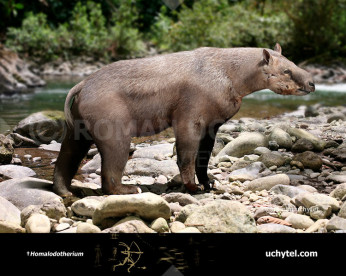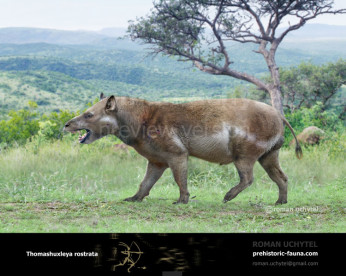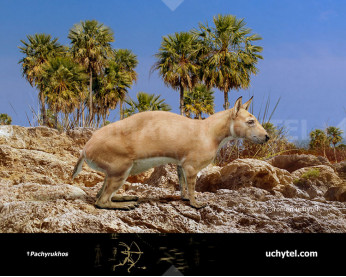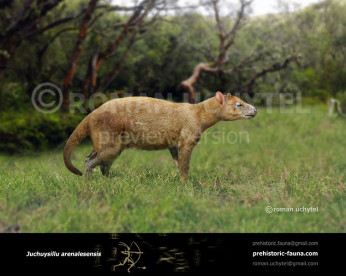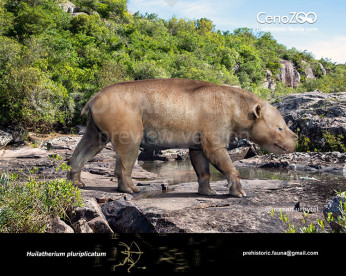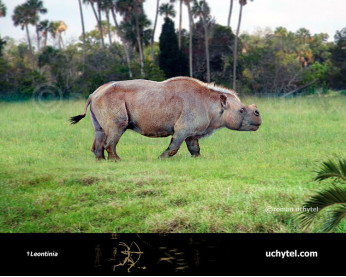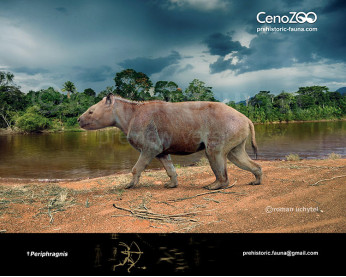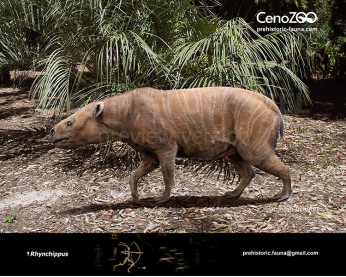Chasicotherium
202127202127Chasicotherium (†Chasicotherium (Cabrera & Kraglievich))
Order: Notoungulata
Family: Homalodotheriidae
Time period: Late Miocene of South America (~10–9 Ma)
Size: 2,9 m in length, 190 cm in height, ~1000-1600 kg of weight
Binomial name: †Chasicotherium rothi
Chasicotherium is an extinct genus of a large notoungulate mammal known originally from a partial skull and mandible discovered in the Arroyo Chasicó Formation, in the stream of Party of Villarino, Buenos Aires, Argentina. The sediments in which the animal was discovered dates to 10 to 9 million years. It is known only from the type species, C. rothi. Its weight was approximately 1 tonne, being the largest and most recent member of the family Homalodotheriidae. It was a large herbivore of the Miocene Pampas, closely related to Homalodotherium.
Chasicotherium (†Chasicotherium (Cabrera & Kraglievich))
Order: Notoungulata
Family: Homalodotheriidae
Time period: Late Miocene of South America (~10–9 Ma)
Size: 2,9 m in length, 190 cm in height, ~1000-1600 kg of weight
Binomial name: †Chasicotherium rothi
Chasicotherium is an extinct genus of a large notoungulate mammal known originally from a partial skull and mandible discovered in the Arroyo Chasicó Formation, in the stream of Party of Villarino, Buenos Aires, Argentina. The sediments in which the animal was discovered dates to 10 to 9 million years. It is known only from the type species, C. rothi. Its weight was approximately 1 tonne, being the largest and most recent member of the family Homalodotheriidae. It was a large herbivore of the Miocene Pampas, closely related to Homalodotherium.

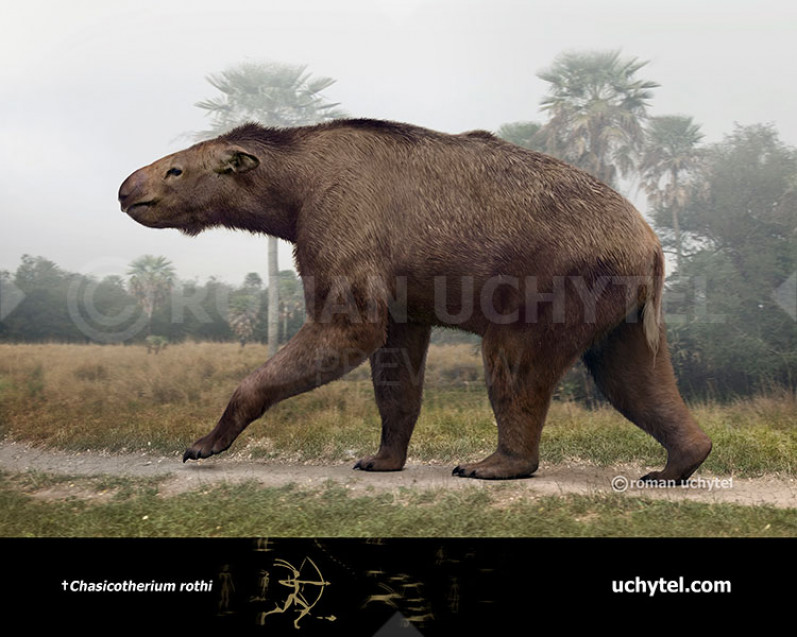
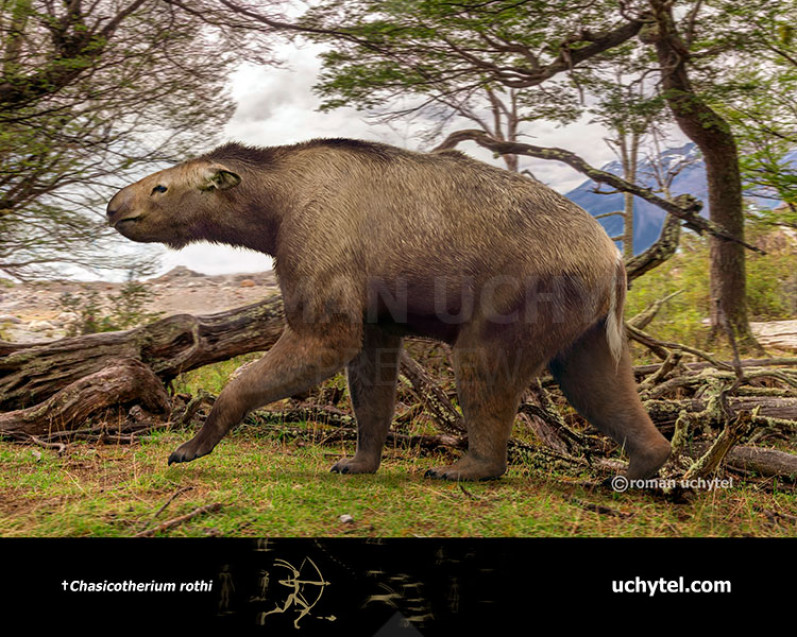
-797x638.jpg)
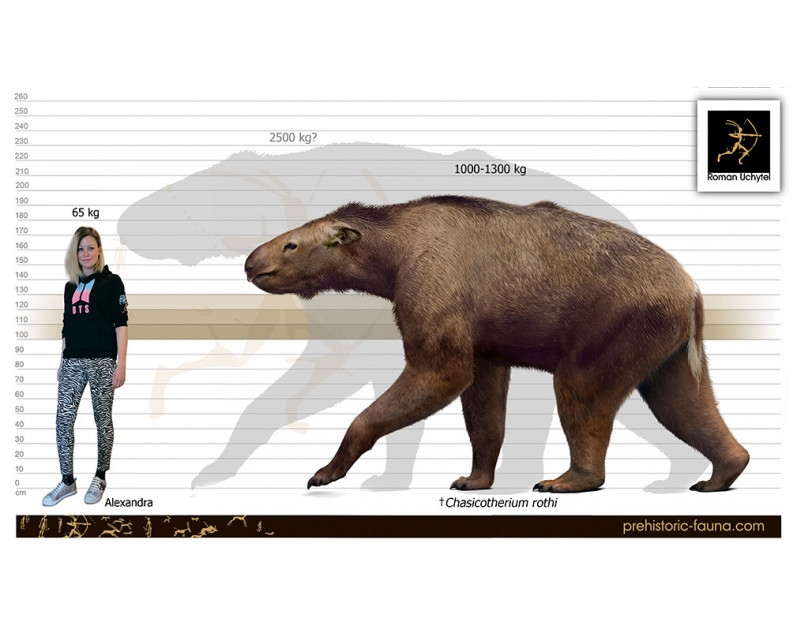


-70x56.jpg)

